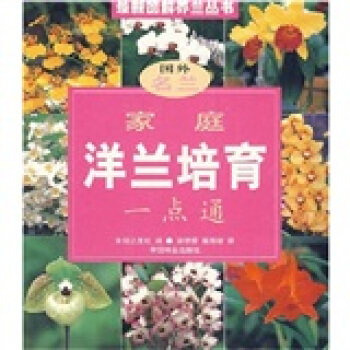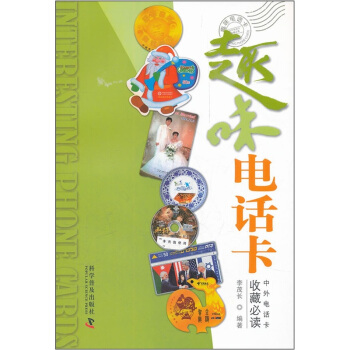![中国国宝系列:中国古瓷器(英文版) [Porcelain of Ancient China]](https://pic.qciss.net/10678934/58d15293Na15093e3.jpg)

具体描述
内容简介
本画册选取目前中国有代表性的古代瓷器,用精美图片和通俗易懂的文字,从商周到明清以时代划分,系统介绍瓷器在中国的发展演变及分布,且每件器物说明文字简洁生动,知识点丰富,可读性强,展示了中国瓷器的悠久历史和独特魅力。
The history of Chinese pottery dates back to the early Neolithic Age.The earliest pottery shards were unearthed from Xianrendong site of Wannian County,Jiangxi Province, with a date of some 8,000 years ago. About 4,000 years later, the Shang Dynasty produced the earliest protoceladon, a leap in ceramic history. This book introduces ancient Chinese porcelain.
作者简介
XuXiaolong, born in 1952, has been engaged in ancient ceramic studiesfor over 30 years. With a keen eye for ancient pottery andporcelain objects, up to now he has published more than 20 academicpapers in authoritative journals. Currently Xu is a guest professorat Peking University Resource College, and a member of collectedarticles appraismg centre at Beijing Wenbo Garden, He is alsoformer vice director of ceramics collection committee of ChinaAssociation of Collectors,and used to be an adviser to "TreasureAppraisal"program on CCTV-2.内页插图
目录
CONTENTS
Preface
From Shang to Western Han
From Eastern Han to Northern and Southern Dynasties
Periods of Sui, Tang and Five Dynasties
Periods of Song, Liao and Kin
Periods of Yuan, Ming and Qing
A Record of Auction of Collections
A Brief Chronology of Chinese History
精彩书摘
Periods of Yuan, Ming and Qing
Ceramics production at Jingdezhen in Jiangxi began as early as the Northern and Southern Dynasties (386–589); after nearly 1,000 years of development, it became the main production hub for imperial porcelain during the Yuan Dynasty (1271–1368) established by the nomadic Mongols. For the first time in history, potters there successfully made blue and white wares decorated with refined cobalt blue pigment, coated with transparent glaze and once–fired at a high temperature of 1,300 degrees centigrade or so; and inspired by the Jun Kiln technique, they invented the underglaze red porcelain once–fired at a temperature of 1,280 degrees centigrade and featuring floral or human figure patterns painted with brilliant copper red pigment.
The blue–and–white technique was further improved during the Ming Dynasty (1368–1644). Court eunuch Zheng He (1371–1435) who made seven voyages to the Western Seas (referring to seas and lands west of the South China Sea) from 1406 to 1433 brought back a unique cobalt blue pigment from the Middle East. By applying it to blue and white wares, an effect of wash painting was acquired. Porcelain items made in the periods of Yongle (1403–1424) and Xuande (1426–1435) were hence known to be the best.
The so–called five–color porcelain wares were fired in the reign (1573–1620) of Emperor Wanli. Technically speaking, they were improvements on what had been produced in the Cizhou Kiln during the Song Dynasty. According to legend, as the bright iron red pigment contained arsenic, cases of slow poisoning occurred among the potters. Consequently, the original glaze color of dark red turned lighter and lighter, and was close to orange by the late Qing, which becomes a good criterion at present day to judge the age of a porcelain item.
The country's porcelain making further flourished during the Qing Dynasty (1644–1911), especially in the periods of Kangxi (1662–1722), Yongzheng (1723–1735) and Qianlong (1736–1795). The decorative patterns on porcelain items coated with mixed glazes give a three–dimensional effect, throwing the old underglaze or overglaze color porcelain into the shade. What's more, after repeated experiments enamel ware had been successfully trial–produced by the late period of Kangxi. By applying various pigments –– all imported from the Western countries, even this very day these highly finished products still retain their dazzling luster. Their body materials have ranged from gold, silver, glass, wood to boccaro earthenware made exclusively in Yixing County of Jiangsu.
前言/序言
Preface
The history of Chinese pottery dates back to the early Neolithic Age (c. 10,000–4,000 years BP). The earliest pottery shards were unearthed from Xianrendong ("Spirit Cave") site of Wannian County, Jiangxi Province, with a date of some 8,000 years ago. About 4,000 years later, the Shang Dynasty (1600–1046 BC) produced the earliest proto–celadon, a leap in ceramic history.
By comparison with earthenware made of baked clay with a kiln temperature of 800 degrees centigrade, the high–firing glazed porcelain made from kaolin? is of more delicate texture and beautiful decoration, and its kiln temperature must reach 1,100 degrees Celsius or above. As China is the birth place of porcelain making, it has often been referred to as "china" in some English–speaking countries.
Archaeological finds show that the export of Chinese porcelain began no later than the Tang Dynasty (618–907). As a special product of China, porcelain wares already well known all over the world were transported at that time to Central Asia, Persia and Mediterranean countries along the famous overland Silk Road, and to the Persian Gulf at first by crossing the Indian Ocean, and eventually to Africa, Europe and America along the maritime Silk Road, which was also called "Porcelain Road."
Nowadays, porcelain products made during the period from the Tang to the Five Dynasties (907–960) –– such as Tang tri–colors, celadon ware of the Yue Kiln (in present Yuyao of Zhejiang), white porcelain of the Xing Kiln (in present Xingtai of Hebei), and underglaze color porcelain of the Changsha Kiln (in present Changsha of Hunan) ––have been unearthed in large quantities in dozens of countries including North Korea (Democratic People's Republic of Korea), Japan, Thailand, India, Iran, Iraq, Sudan, Egypt and Tanzania. For instance, archaeologists have excavated a total of 12,000 porcelain sherds in the ancient Egyptian city of Fustat, and some 400 from more than 30 historical sites in the Tanganyika area of Tanzania. Obviously, exports of ancient Chinese porcelain had significantly changed local history and folkways.
In addition, Muslims living in Indonesia, Malaysia, the Philippines and other countries have the tradition of using blue or green porcelain ware as religious objects. Therefore, Chinese porcelain has been collected in many local mosques. For example, mosques in Ardabil, a historical city in northwestern Iran, have a collection of some 1,600 porcelain pieces in total, many of which are top–quality products (including well–known blue and white porcelain) baked during the Song (960–1279), Yuan (1271–1368) and Ming (1368–1644) dynasties.
Along with the exquisite products, China's technology of porcelain making was spreading worldwide as well. In the 13th century, King Ram Khamhaeng (?–1298) of the Sukhothai K i n g d om – – a n ancient kingdom exi s t ing from 1238 till 1438 in Thai history –– brought some Chinese craftsmen back to his royal city of Songkalok, and thus established the country's own porcelain industry there. From then on Thailand began to export its self–made white porcelain ware to other Southeast Asian countries.
The production of flambé porcelain by the Jian Kiln (in present Jianyang of Fujian) dates from the Northern Song Dynasty (960–1127), and these articles had been sold well in East and Southeast Asia. Flambé or kiln transmutation refers to the technique of making iridescent chinaware by the irregular application of glaze. During the Southern Song Dynasty (1127–1279) the technology was introduced into Japan, and black glazed porcelain was successfully baked in Seto, which had ever since become an important porcelain base of the country. In 1976, a sunken 14th–century merchant ship was discovered off the coast of Shin'an in South Korea; undersea excavations during following years brought up a collection of Chinese porcelain numbering 12,700 pieces. Among them, 116 were black or brown glazed porcelain by the Jian Kiln –– an important proof of the famous kiln becoming active in foreign trade at that time.
As expor t scale expanded s teadi ly, the traditional decorative figures of dragon, phoenix and kylin (or Chinese unicorn, an auspicious legendary animal) as well as floral designs on porcelain became very popular among foreign buyers. Even today Chinese porcelain articles are favorite collections of either museums or private persons all over the world.
用户评价
相关图书
本站所有内容均为互联网搜索引擎提供的公开搜索信息,本站不存储任何数据与内容,任何内容与数据均与本站无关,如有需要请联系相关搜索引擎包括但不限于百度,google,bing,sogou 等
© 2025 book.qciss.net All Rights Reserved. 图书大百科 版权所有




















